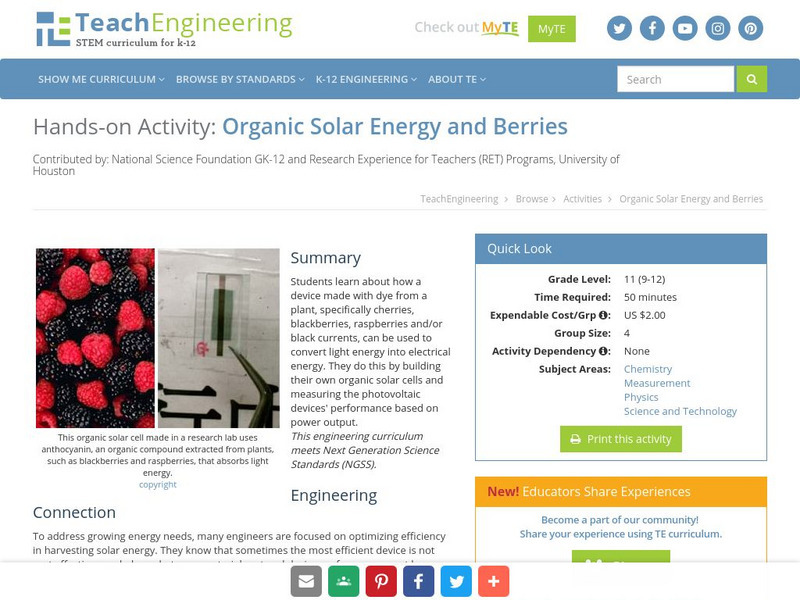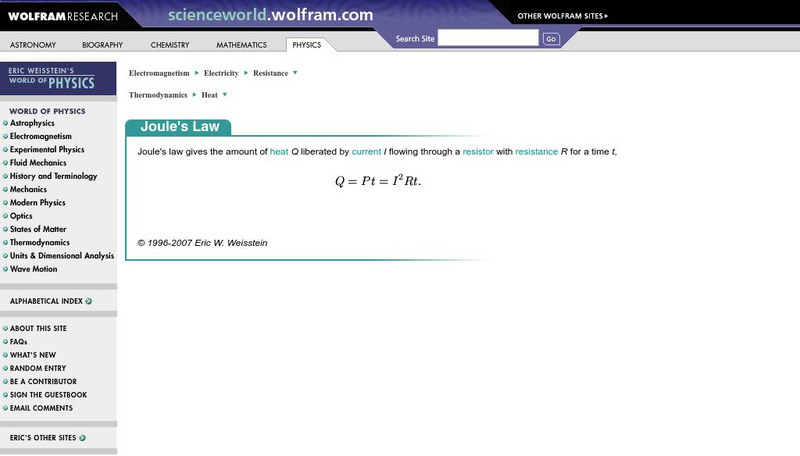Concord Consortium
Concord Consortium: Calculating Voltage in Series Circuits
See how Ohm's Law can tell us that the voltage across resistors will depend on that current value I and each R-value.
TeachEngineering
Teach Engineering: Organic Solar Energy and Berries
Students learn about how a device made with dye from a plant, specifically cherries, blackberries, raspberries and/or black currents, can be used to convert light energy into electrical energy. They do this by building their own organic...
TeachEngineering
Teach Engineering: Power Your House With Water
Students learn how engineers design devices that use water to generate electricity by building model water turbines and measuring the resulting current produced in a motor. Students work through the engineering design process to build...
Texas Instruments
Texas Instruments: The Magnetic Field in a Slinky
Students use a Magnetic Field Sensor to measure the magnetic field and the current in a solenoid. They explore factors that affect the magnetic field, study how the field varies in parts of the solenoid, and determine the permeability...
Concord Consortium
Concord Consortium: Total Resistance for Resistors in Series
Use the tutorial to find the total resistance for resistors in a series circuit.
Concord Consortium
Concord Consortium: Calculating Voltage in Series Parallel Circuits
Use the series and parallel resistance formulas to determine the total resistances of the parts. Then, use Ohm's Law to calculate the voltage drops across each part.
Concord Consortium
Concord Consortium: Total Resistance for Resistors in Parallel
See how this application of Ohm's Law leads to a formula for the total of parallel resistances.
Science4Fun
Science4 Fun: Power
What is power? Illustrated discussion of power including how it is measured and electrical power.
Wolfram Research
Wolfram Science World: Joule's Law
This site briefly defines Joule's Law. A formula is provided and links to related terms.
TeachEngineering
Teach Engineering: Dams
Through eight lessons, students are introduced to many facets of dams, including their basic components, the common types (all designed to resist strong forces), their primary benefits (electricity generation, water supply, flood...









